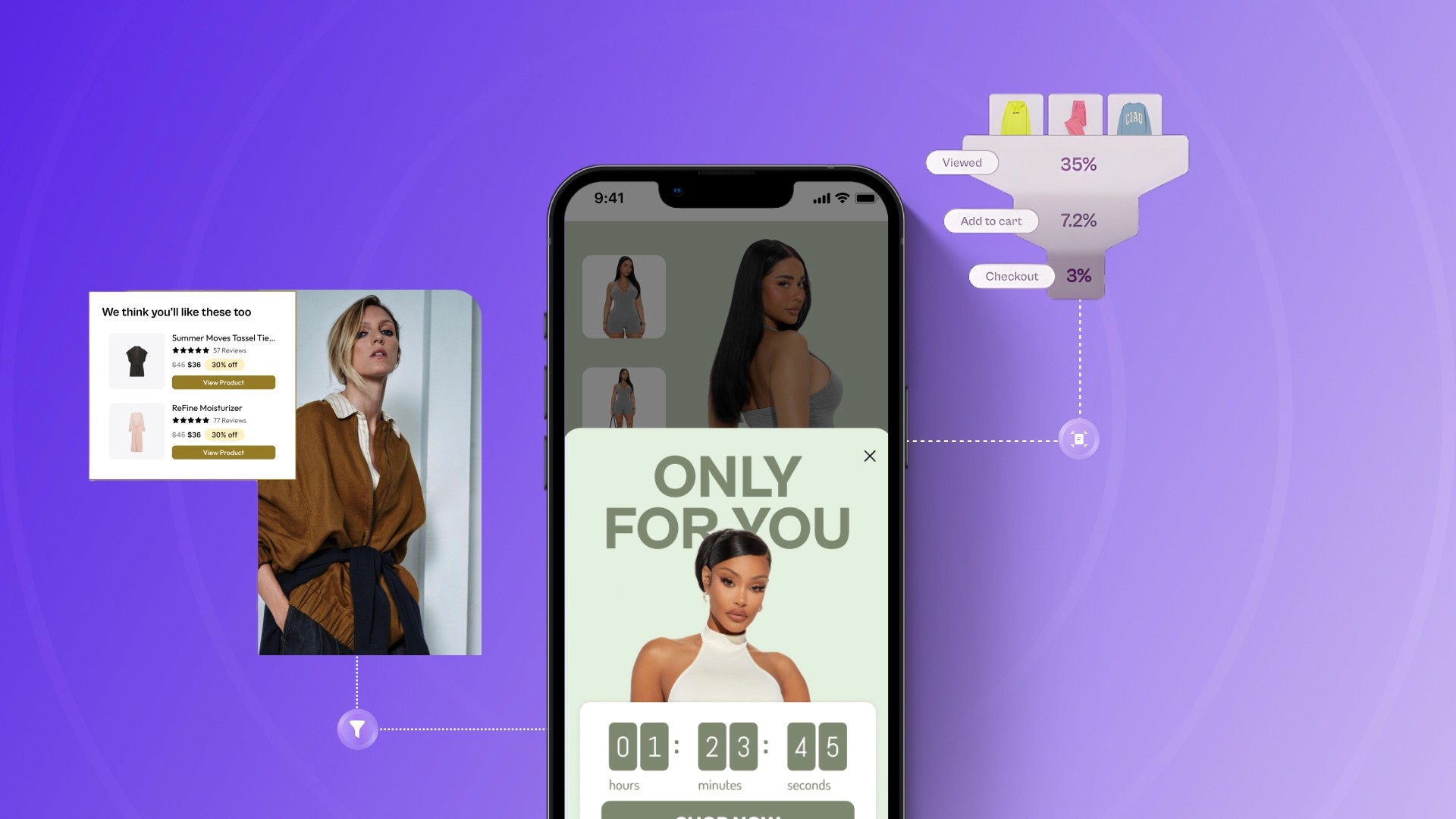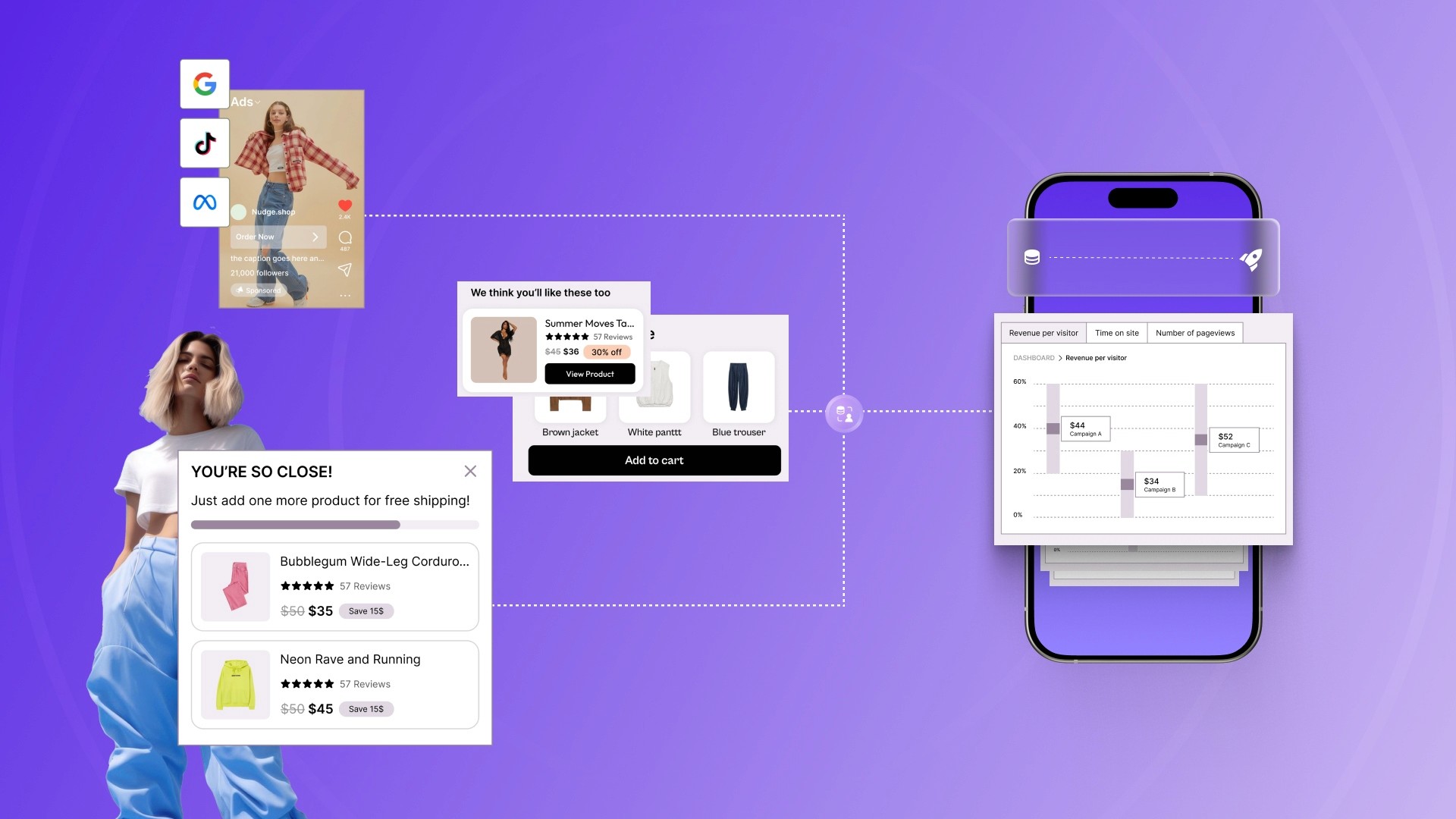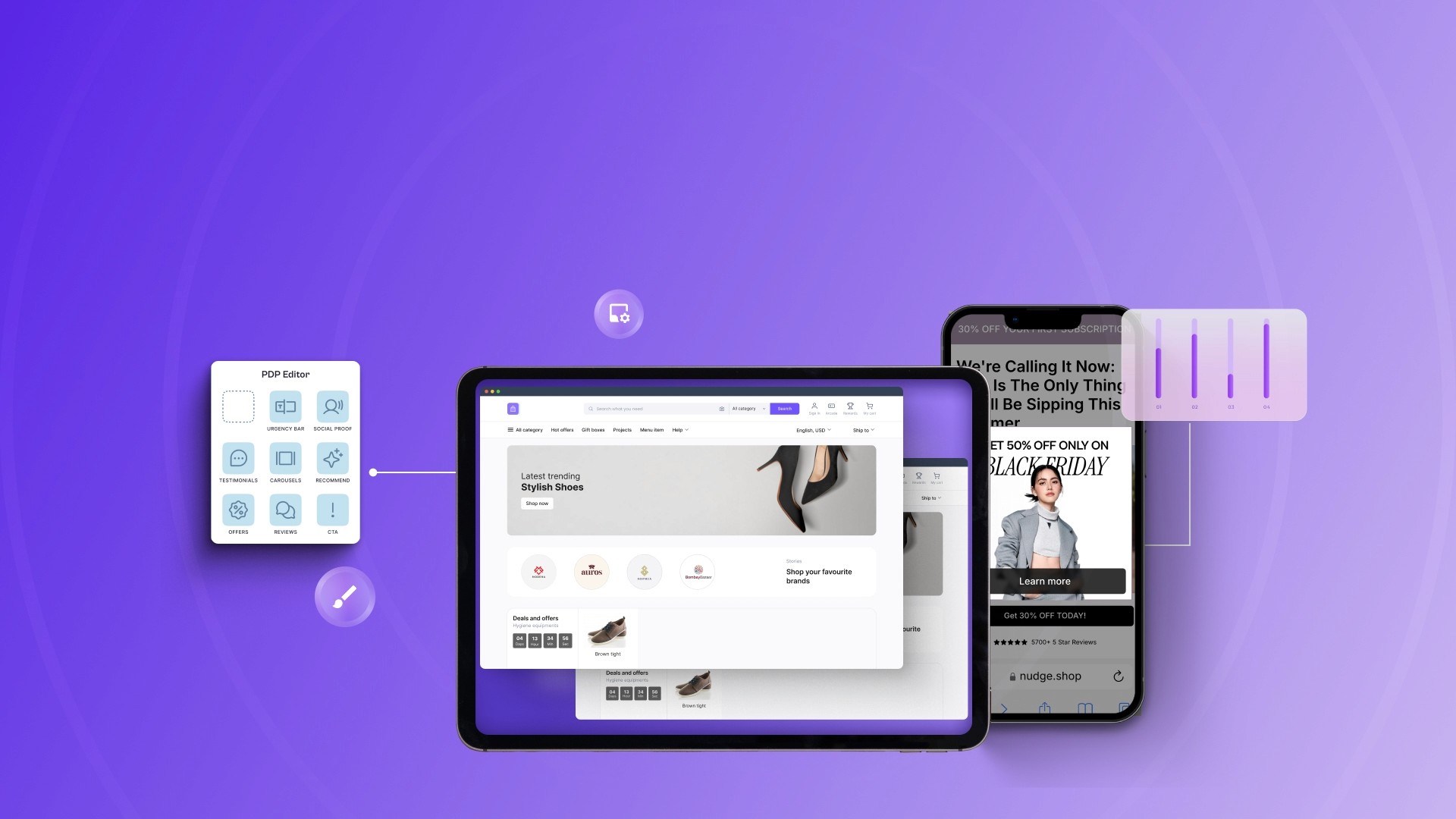User Engagement
Understanding Geotargeting and Its Benefits
Discover what geotargeting is, its benefits and best practices. Know how it helps businesses deliver location-based content and offers to boost conversions.

Gaurav Rawat
Jul 2, 2025
A local coffee shop can boost foot traffic drastically, not with a new drink, but by showing mobile ads only to people within a 2-mile radius during their morning commute. That’s the quiet power of geotargeting. According to a study by Factual, 89% of U.S. marketers reported increased sales by using consumer location data to boost the effectiveness of their ad campaigns.
It’s no longer about spraying ads everywhere and hoping for the best today; it’s about being precise, timely, and relevant. This blog breaks down what geotargeting actually is, why it’s turning heads across industries, and how you can do it right without creeping out your B2C business audiences. Let’s get started.
Key Takeaways
Geotargeting delivers location-specific ads or content, improving conversions by reaching users where they’ll act.
It works through methods like GPS, IP targeting, radius-based geofencing, and Bluetooth beacons.
Smart geotargeting combines location data with user demographics, behavior, and timing.
The difference between geotargeting and geofencing? Geotargeting covers broad areas (like ZIP codes), while geofencing triggers actions when users enter a precise boundary.
What is Geotargeting?
Geotargeting is a digital marketing strategy that delivers content, like ads, promotions, or in-app messages, based on a user’s geographic location. Whether it’s a city, neighborhood, or even a specific street corner, businesses use this data to connect with people where they are most likely to take action. It’s about being contextually relevant: if someone’s walking past your store, why not serve them a deal they can use right then and there?
Now let’s see different types of geotargeting:
Country-level targeting: Used for broad campaigns across regions or international markets.
City or ZIP code targeting: Helps businesses localize messaging based on city-specific behaviors.
Radius targeting (Geo-fencing): Delivers messages to users within a specific distance from a set location.
IP address targeting: Targets users based on the physical location tied to their internet connection.
Beacon-based targeting: Utilizes Bluetooth beacons in physical spaces like malls or stadiums for ultra-precise targeting.
When done right, geotargeting feels less like an ad and more like a helpful nudge.
If you want to achieve the perfect implementation of geotargeting, then Nudge is all you need! Our scalable 1:1 personalization feature enables you to opt for granular targeting, ensuring each user receives the right message at the right moment.

Now, let’s explore the main benefits of geotargeting.
Benefits of Geotargeting
Reaching the right audience is no longer enough; you need to reach them in the right place, at the right time for your B2C business. That’s where geotargeting shines. Here are some of the benefits of it:
Higher Conversion Rates
When people see ads that are relevant to where they are, they’re more likely to act. Whether it's a nearby store or an event happening around the corner, geotargeting aligns your offer with the user’s real-world context, boosting conversion chances dramatically.
Better Ad Spend Efficiency
Why waste ad dollars on people who are nowhere near your business? With geotargeting, you focus only on relevant regions, reducing waste and maximizing return on investment. It ensures every penny spent is working smarter, not harder.
Enhanced User Experience
Geotargeted content feels more relevant and timely, making users feel understood rather than marketed to. Whether it’s language preferences or local promotions, tailoring content based on location enhances the overall experience and encourages long-term engagement.
Local Brand Awareness
For businesses with physical locations, geotargeting builds visibility in specific neighborhoods or cities. By consistently showing up in local feeds, you stay top-of-mind and position your brand as a go-to option in the area.
Real-Time Engagement Opportunities
With tools like geofencing and beacon technology, businesses can trigger timely messages when users are near a specific location. This opens doors for flash sales, time-sensitive promotions, or in-the-moment engagement that feels personal and immediate.
Geotargeting isn’t just a digital trick; it’s a real-world connection strategy.
Also read: How To Spot & Attract High Value Customers To Boost Revenue?
So, how exactly does it all come together? Let's dive into how geotargeting works.
How Geotargeting Works?
Geotargeting might seem like digital wizardry, but it’s all about the smart use of location data. It identifies where users are and delivers content that makes sense for that exact spot. Here’s how businesses make that happen, step by step:
1. Collecting Location Data
Everything starts with gathering a user’s location, which can come from GPS on mobile devices, IP addresses on desktops, or Wi-Fi and Bluetooth signals. For example, when someone opens a weather app, it pinpoints their location to serve local forecasts; marketers use the same logic to serve location-relevant ads.
2. Defining Geographic Boundaries
Businesses decide where they want to target users. This can be as broad as an entire country or as specific as a few city blocks. A local pizzeria, for instance, might only show lunch deals to users within a 3-mile radius during noon hours.
3. Setting Audience Criteria
Besides location, marketers can layer other filters like demographics, interests, or device types. Imagine a sports brand targeting young adults in Boston who recently visited a stadium; they can push a limited-edition merchandise ad during game days.
4. Delivering Customized Content
Once the audience is defined, tailored ads or notifications are pushed via social media, search engines, or apps. For example, a retail store might send a 20% discount coupon when someone walks near their outlet, encouraging instant footfall.
5. Real-Time Monitoring and Adjustments
Campaigns are constantly monitored for performance, and adjustments are made on the fly. If a certain ZIP code isn’t responding well, budgets can be reallocated to better-performing areas. This keeps the campaign efficient and responsive to real-world behavior.
From the moment a user enters a location to the instant they click on a nearby offer, geotargeting is always working behind the scenes. But how does this differ from geofencing, which also uses location? Let’s break that down next.
Geotargeting vs Geofencing
They both sound similar and rely on location, but geotargeting and geofencing aren’t twins; they’re more like cousins. While both aim to deliver content based on geography, they do it in slightly different ways.
Understanding the distinction helps you pick the right approach for your B2C business marketing goals. Here’s a simple overview of the differences:
Feature | Geotargeting | Geofencing |
Definition | Targets users based on general location, like city, state, or country. | Creates a virtual boundary and triggers actions when users enter or exit it. |
Precision | Broader targeting (ZIP codes, regions, demographics). | More precisely, often down to meters (e.g., a specific store). |
Trigger Mechanism | Content shown based on set location filters. | Real-time triggers based on a user crossing a predefined area. |
Use Case Example | Running a campaign for all users in New York City. | Sending a push notification when someone walks near your store. |
Tech Involved | IP addresses, GPS, device location, and cookies. | GPS, RFID, Wi-Fi, Bluetooth beacons. |
While geotargeting provides broad reach, geofencing focuses on hyper-local moments. The best strategies often combine both, but to really make the most of geotargeting, you need to know the rules of the game.
Next, let’s explore best practices to get it right.
Best Practices for Geotargeting
While the concept of geotargeting is simple, the execution requires thoughtfulness and precision. Let’s break down the best ways to make it work:
1. Define Clear Geographic Boundaries
To reach the right people, you need to define where they are. Broad targeting wastes money, while overly narrow areas may not yield enough traction. Successful campaigns begin with understanding where your most engaged or profitable users are located, down to neighborhoods or postal codes.
How to do it:
Review analytics to identify top-performing cities or ZIP codes.
Use heatmaps or tools to visualize user hotspots.
Select areas with higher conversion rates, not just high traffic.
Avoid targeting entire cities unless your product appeals to a broad audience.
Continuously test and refine boundaries based on campaign performance.
2. Layer Location with Audience Demographics
Just knowing where someone is isn’t enough. Adding layers like age, income, interests, or behavior refines your targeting even further. It ensures your messaging resonates deeply and feels personal, which improves both engagement and ROI.
How to do it:
In ad platforms, combine location filters with demographic or interest targeting.
Use Nudge's targeting for identifying target audiences.
For example, target “Men aged 18–30 in Miami interested in fitness.”
Adjust content tone and imagery based on demographics.
Segment your audience further for A/B testing across regions and traits.
With Nudge, you can take advantage of the power of AI to automate your testing process!
3. Personalize Content Based on Location
A user in Chicago shouldn’t see the same winter jacket ad as someone in Phoenix. Geotargeting gives you a chance to localize your messaging, creating content that fits the weather, culture, or even the dialect of a particular region.
How to do it:
Write ad copy that includes city names or regional lingo.
Adapt offers to suit local events, holidays, or weather conditions.
Use location-aware email campaigns with dynamic content blocks.
Include nearby landmarks in images or headlines for local familiarity.
Build separate landing pages for each region if possible.

4. Optimize for Mobile Users
Most geotargeting happens via smartphones, like, Google Maps, food delivery apps, or mobile browsers. If your site loads slowly or doesn’t display well on mobile, you’re likely to lose the customer right at the moment of intent.
How to do it:
Use a responsive design that works across all screen sizes.
Optimize mobile page speed using tools like Nudge.
Include features like “click to call” or “tap for directions.”
Keep forms short and buttons large enough for thumbs.
Regularly test on both Android and iOS devices to ensure compatibility.
5. Use Real-Time Data to Refine Campaigns
Your audience’s behavior changes daily. A rainy day might tank foot traffic, while a local event might spike demand. Monitoring these changes helps you adjust campaigns for better outcomes, sometimes even hour by hour.
How to do it:
Monitor location-specific performance using ad dashboards and analytics.
Pause or boost ads in regions based on real-time results.
Set alerts for sudden drops in CTR or conversions in specific locations.
Use location intelligence platforms for predictive trends.
Schedule ads during peak foot traffic hours for physical stores.
6. Respect Privacy and Transparency
Users are becoming increasingly conscious of how their data is used. If they feel you’re following them without consent, trust is broken. Transparency isn’t just ethical—it’s good business.
How to do it:
Display clear consent prompts for location tracking on apps and websites.
Make your privacy policy accessible and easy to understand.
Avoid collecting unnecessary data, stick to what helps your campaign.
Provide opt-out options in in-app notifications.
Stay compliant with laws like CCPA (U.S.) and GDPR (EU).
Done well, geotargeting feels natural, like your brand just happens to be exactly where and when your audience needs it. These best practices set the foundation for campaigns that are both strategic and user-friendly.
Personalize Geotargeting with Nudge
Nudge offers AI-driven UX experimentation for 1:1 personalization. We help you unify user data from user interactions and past behavior and then run rapid experiments to deliver personalized experiences for your B2C business. Our AI and agents automate the heavy lifting of personalization, optimizing UI, content, incentives, and timing.
We offer:
Quick time-to-value by layering AI decision-making on top of existing data
Onsite personalization, product recommendations, and advanced analytics.
Speeds up the experimentation process by testing numerous variables at once with the power of AI
Interfaces, both full pages and UX components like overlays, are adaptive and get optimized based on user behavior

Conclusion
Geotargeting isn’t just a fancy marketing trick; it’s a smarter way to connect. From boosting conversions and cutting ad waste to personalizing content that truly resonates, the benefits are hard to ignore. If you want your marketing to feel more like a helpful nudge and less like noise, geotargeting is the move.
Start small, test often, and let location guide your strategy. With the right approach, geotargeting turns every campaign into a local success story waiting to happen.
With Nudge, your geotargeting strategy goes from static to smart. Our AI-driven experimentation engine personalizes user experiences based on real-time location data, automating content, UI, and offers without manual rules.
Book a demo with us and deliver hyper-local messages at scale and drive conversions, all without writing a single line of code.
Ready to personalize on a 1:1 user level?




